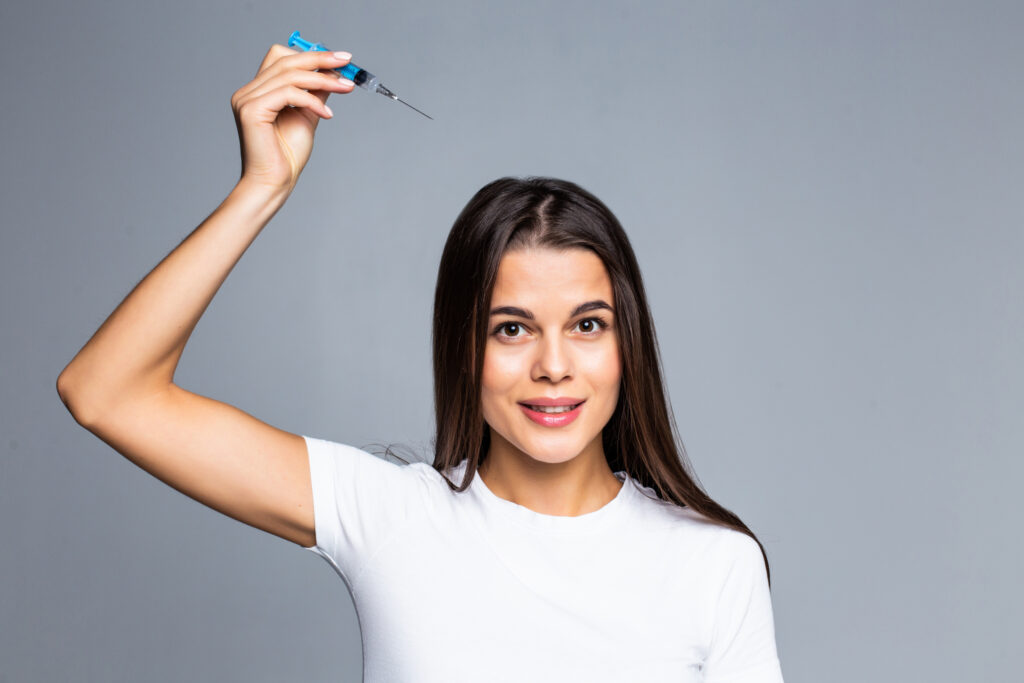Hair loss and thinning hair are common problems across all genders. About 50 million men and 30 million women have lost at least some hair. There are hundreds of different hair loss treatments with varying levels of reliability and success. But some are based on much more solid science than others. PRP therapy is one of the newer modalities for the treatment of hair loss.
“PRP can strengthen the existing hair and thicken them. By thickening them, they take up more space and cover more of the scalp. Additionally, plasma has vitamins, nutrients and proteins which adds to the benefit. And because PRP has growth factors which helps stimulate collagen and generate new collagen to grow, I’ve been using it successfully for hair loss treatment.
It doesn’t work for everybody, but it works for a majority of people. We pick our patients carefully. I don’t recommend it to someone who has end-stage hair loss for example when hair transplant is the go-to option.”
Dr. Siddhartha Saikia
What is PRP therapy?
PRP (platelet-rich plasma) therapy for hair loss is a three-step medical treatment in which a person’s blood is drawn, processed, and then injected into the scalp. PRP injections stimulate natural hair growth and maintain it by increasing blood supply to the hair follicle and increasing the thickness of the hair shaft. This therapy is often combined with other hair loss treatments.
PRP therapy has been in use since the 1980s. It’s been used for problems such as healing injured tendons, ligaments, and muscles as well as dental surgery. To understand how PRP works, it is important to be aware of the role that platelets play in healing.
Platelets are a component of blood, along with red and white blood cells. When a person suffers a cut, the platelets are some of the body’s “first responders” that arrive to stop the bleeding and promote healing. PRP contains a range of growth factors and proteins that speed tissue repair. As some types of hair loss result from damage to hair follicles, researchers began to try PRP for regrowth of hair by reversing the process that occurs in androgenic alopecia (AGA).
Most PRP therapy requires three treatments 4–6 weeks apart. Beyond that, maintenance treatments are often done every 6 months.
Step 1
Blood is drawn, typically from the arm and put into a centrifuge machine (a machine that spins rapidly to separate fluids of different densities).
Step 2
After about 10 minutes in the centrifuge, your blood will have separated into in three layers:
- PPP: Platelet-poor plasma
- PRP: Platelet-rich plasma
- RBC: Red blood cells
Step 3
The PRP is drawn up into a syringe and then injected into various areas of the scalp for hair growth. Because PRP therapy involves injecting your own blood into your scalp, and with sterile equipment, you aren’t at risk for getting a reaction or communicable diseases.
However, any therapy that involves injections always carries a risk of side effects such as:
- Mild pain at the injection site
- Scalp tenderness
- Swelling
- Headache
- Itching
- Temporary bleeding at the injection site
- Injury to blood vessels or nerves
- Infection
- Scar tissue
- Negative reaction to the anesthetic used in the therapy. Notify your health care provider if you have any past allergy to anesthesia used.
Risks of PRP for hair loss
Be sure to report all medications you’re on before the procedure including supplements. When you go for your initial consultation, you may be advised against PRP if you:
- Are on blood thinners.
- Are a heavy smoker.
- Have a history of alcohol or drug misuse.
- Have any underlying medical condition which can interfere with the treatment.
Is PRP hair treatment a permanent solution?
PRP is not a cure for conditions that cause hair loss. A person would need to receive multiple PRP treatments to get the benefits of hair growth. It takes a few sittings to see the initial results. And after the results start to appear, you may require maintenance sittings once a year to maintain new hair regrowth.
How much does PRP for hair loss cost?
The price typically ranges from ₹2000-₹5000 per sitting. Pricing depends on a number of factors including:
- Your geographic location
- Quality of equipment
- The addition of nutritive components
- Additional micro-needling
Conclusion
If you’re concerned about hair loss, you have a number of options including medication like minoxidil and finasteride along with hair transplant surgery. Another consideration is PRP therapy. PRP is a safe and effective way of reversing hair loss and stimulating new hair growth.
Talk to your skin specialist to see which treatment or combination of treatments is the best choice for you.
Click here to read some FAQs about AGA and Baldness.
